Related Research Articles

Pope Clement XII, born Lorenzo Corsini, was head of the Catholic Church and ruler of the Papal States from 12 July 1730 to his death in February 1740.
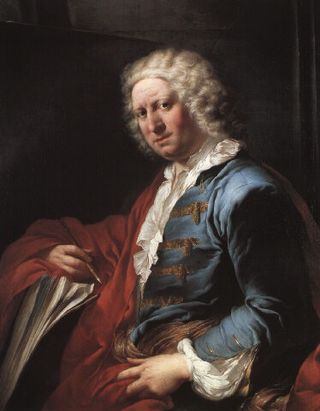
Giovanni Paolo, also known as Gian Paolo Panini or Pannini, was an Italian painter and architect who worked in Rome and is primarily known as one of the vedutisti. As a painter, Panini is best known for his vistas of Rome, in which he took a particular interest in the city's antiquities. Among his most famous works are his view of the interior of the Pantheon, and his vedute—paintings of picture galleries containing views of Rome. Most of his works, especially those of ruins, have a fanciful and unreal embellishment characteristic of capriccio themes. In this they resemble the capricci of Marco Ricci. Panini also painted portraits, including one of Pope Benedict XIV.

Budrio is a town and comune in the Metropolitan City of Bologna, in Emilia-Romagna, Italy; it is 15 kilometres (9 mi) east of Bologna.

The Capitoline Museums are a group of art and archaeological museums in Piazza del Campidoglio, on top of the Capitoline Hill in Rome, Italy. The historic seats of the museums are Palazzo dei Conservatori and Palazzo Nuovo, facing on the central trapezoidal piazza in a plan conceived by Michelangelo in 1536 and executed over a period of more than 400 years.

The Basilica of the Holy Cross in Jerusalem or Basilica di Santa Croce in Gerusalemme, is a Catholic Minor basilica and titular church in rione Esquilino, Rome, Italy. It is one of the Seven Pilgrim Churches of Rome.

Charles-Louis Clérisseau was a French architect, draughtsman, antiquary, and artist who became a leading authority on ancient Roman architecture and Roman ruins in Italy and France. With his influence extending to Russia, England, and the United States, and clients including Catherine the Great and Thomas Jefferson, Clérisseau played a key role in the genesis of neoclassical architecture during the second half of the 18th century.
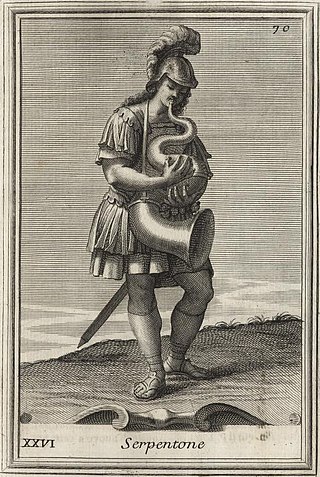
Filippo Bonanni; S.J. or Buonanni was an Italian Jesuit scholar. His many works included treatises on fields ranging from anatomy to music. He created the earliest practical illustrated guide for shell collectors in 1681, for which he is considered a founder of conchology. He also published a study of lacquer that has been of lasting value since his death.

Filippo Buonarroti, the great-grandnephew of Michelangelo Buonarroti, was an Italian official at the court of Cosimo III, Grand Duke of Tuscany and an antiquarian, whose Etruscan studies, among the earliest in that field, inspired Antonio Francesco Gori. The Etruscan art and antiquities in the family palazzo-museum of Florence, Casa Buonarroti, are his contribution to the artistic-intellectual memorial to the Buonarroti.
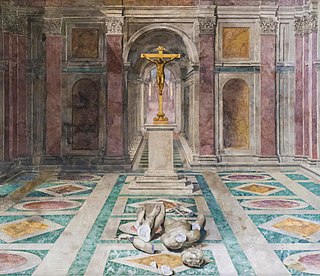
Tommaso Laureti, often called Tommaso Laureti Siciliano, was an Italian painter from Sicily who trained in the atelier of the aged Sebastiano del Piombo and worked in Bologna. From 1582, he worked for papal patrons in Rome in a Michelangelo-inspired style with special skill in illusionistic perspective, that in his Roman work avoided all but traces of Mannerism.

Italy has a very broad and diverse architectural style, which cannot be simply classified by period or region, due to Italy's division into various small states until 1861. This has created a highly diverse and eclectic range in architectural designs. Italy is known for its considerable architectural achievements, such as the construction of aqueducts, temples and similar structures during ancient Rome, the founding of the Renaissance architectural movement in the late-14th to 16th century, and being the homeland of Palladianism, a style of construction which inspired movements such as that of Neoclassical architecture, and influenced the designs which noblemen built their country houses all over the world, notably in the United Kingdom, Australia and the United States of America during the late-17th to early 20th centuries.

Orazio Torriani (1578-1657) was an architect and sculptor who worked in Rome.
Virginio Vespignani was an Italian architect.

Stefano Borgia was an Italian Cardinal, theologian, antiquarian, and historian.

Giampietro Campana, created marchese di Cavelli (1849), was an Italian art collector who assembled one of the nineteenth century's greatest collection of Greek and Roman sculpture and antiquities. The part of his collection of Hellenistic and Roman gold jewellery conserved in the Musée du Louvre warranted an exhibition devoted to it in 2005–06. He was an early collector of early Italian paintings, the so-called "primitives" of the fourteenth and fifteenth centuries, which were overlooked by his contemporaries. And like many collectors of his generation, he coveted Italian maiolica of the 15th and 16th centuries.
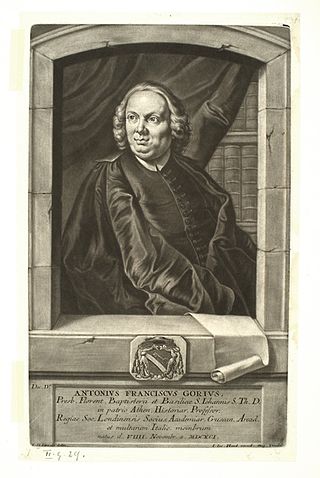
Antonio Francesco Gori, on his titlepages Franciscus Gorius, was an Italian antiquarian, a priest in minor orders, provost of the Baptistery of San Giovanni from 1746, and a professor at the Liceo, whose numerous publications of ancient Roman sculpture and antiquities formed part of the repertory on which 18th-century scholarship as well as the artistic movement of neoclassicism were based. In 1735 he was a founding member of a circle of antiquaries and connoisseurs in Florence called the Società Colombaria, the predecessor of the Accademia Toscana di Scienze e Lettere la Colombaria, to foster "not only Tuscan Poetry and Eloquence, or one faculty only; but almost all the most distinguished and useful parts of human knowledge: in a word, it is what the Greeks called Encyclopedia".

Flaminio Vacca or Vacchi was an Italian sculptor.

Paolo Alessandro Maffei was an antiquarian with a humanist education, who was active in Rome. Maffei was the son of Paolo Maffei and his wife Giovanna di Raffaele, both of patrician families of Volterra. He was a descendant of the humanist and papal bureaucrat Raffaello Maffei, "il Volterrano," (1451–1522), author of the Commentaria urbana (1506), dedicated to Julius II. Paolo Alessandro was made a cavaliere of the Tuscan Order of Saint Stephen and an honorary member of the Papal Guard. He wrote the laudatory biography of Pope Pius V, in which he praised the Pope's suppression of newsletters and slanderous printed avvisi in 1572.
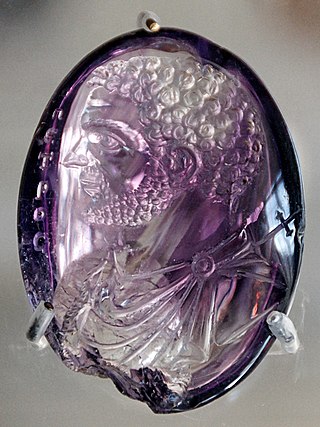
An engraved gem, frequently referred to as an intaglio, is a small and usually semi-precious gemstone that has been carved, in the Western tradition normally with images or inscriptions only on one face. The engraving of gemstones was a major luxury art form in the Ancient world, and an important one in some later periods.
Sarti can be referring to the following items:
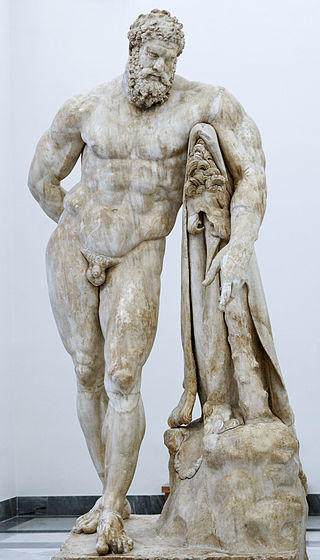
The classical sculptures in the Farnese Collection, one aspect of this large art collection, are one of the first collections of artistic items from Greco-Roman Antiquity. It includes some of the most influential classical works, including the sculptures that were part of the Farnese Marbles, their collection of statuary, which includes world-famous works like the Farnese Hercules, Farnese Cup, Farnese Bull and the Farnese Atlas. These statues are now displayed in the Naples National Archaeological Museum in Italy with some in the British Museum in London.
References
- ↑ Dizionario degli Artisti Italiani Viventi: pittori, scultori, e Architetti, by Angelo de Gubernatis. Tipe dei Successori Le Monnier, 1889, page 455.
- ↑ Cultura Volume 25, 1906, page 106. Review of book detailing collection.